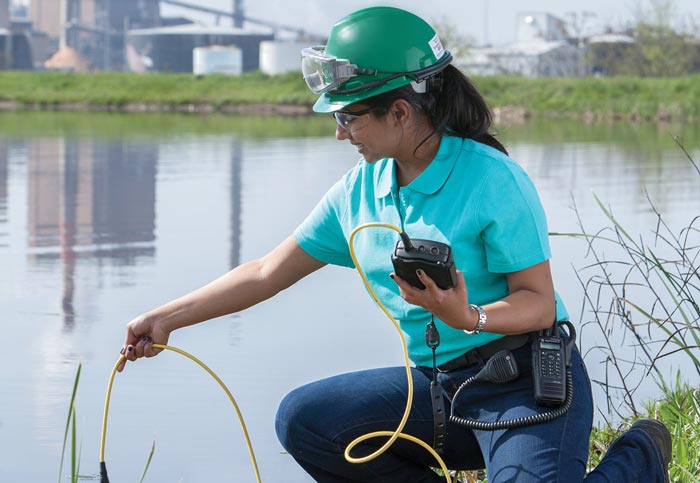Tuesday, 16/12/2025 | 02:53 GMT+7
The paper industry differs from agriculture for a couple of important reasons. First, 72 percent of the fiber used in paper comes from trees which are rainfall-fed. This, in water conservation parlance, is considered green water — which is distinguished from surface and groundwater, referred to as blue water. Agriculture also depends on rainfall, but in many cases it is supplemented by a great deal of additional water via irrigation, which is why the industry is by far the largest water consumer in the nation.
Most of the water used in the paper production life cycle is used during the manufacturing process, primarily for conveyance of the fibers as they are extracted from logs as wood chips, and through the pulping process. By the same token, most of the energy used in paper-making goes into cooking the pulp, in order to remove the fibers, and drying the wet fibrous mat as it comes out of the paper machine before it is rolled up and ultimately cut into reams or converted into cardboard. According to this Energy Star report, more than $7 billion worth of energy was purchased in 2009 for the manufacture of pulp, paper and paperboard. This is primarily used as boiler fuel for both process-steam and power generation.

Of course, there is an opportunity to do things in a smarter and greener way. There is a great deal of residual biomass such as bark that could be used to produce energy. International Paper does exactly that, generating 72 percent of its energy from forest residuals. The company has also been working to improve energy efficiency, with a goal of a 15 percent reduction in purchased energy by 2020. An investment of $290 million has led to a reduction of 9 trillion BTUs per year. At current coal prices, that will pay for itself in 8 years, though if natural gas is substituted, it could take longer. Since 2010, the company has reduced its purchased energy usage per ton of paper by 3.7 percent.
Some examples include:
Eastover Mill in South Carolina leveraged a $21 million investment to reduce energy consumption by 26 percent. This resulted in an elimination of 50,000 tons of coal per year.
Svetogorsk Mill in Russia launched a new 25-megawatt combined heat and power system (CHP), which generates electricity and process steam at efficiencies significantly higher than standalone power generation. That’s enough for 16,000 U.S. homes, with steam being provided as an essentially free byproduct.
Maysville, Kentucky Mill invested in paper machine heat recovery, which should save the equivalent of 12,000 tons per year of coal annually. The project takes hot exhaust gas from the paper drying process and uses it for heating water, decreasing the need for fossil fuel.
On the water side of the story, I spoke with Adam Miklos, International Paper’s Business EHS manager, responsible for water, about the company’s progress in this area.
What’s important to understand, when talking about water conservation, is that we’re really talking about conserving available water. Whenever water is used, most of it generally makes its way back into the water supply, locally, through the sewer system. The rest is either removed through evaporation, or is actually bound up in the product. All of that will eventually be returned to the planetary supply, but it is removed from the local water supply and is therefore considered consumed. Of course, any water that is contaminated must be treated before it can be safely used again for all purposes.
Anh Tuan








 Enhancing capacity to develop and implement energy efficiency policies at local level
Enhancing capacity to develop and implement energy efficiency policies at local level
 Bosch Vietnam Plant Benefits from Investment in Energy Efficiency
Bosch Vietnam Plant Benefits from Investment in Energy Efficiency
 Webinar 2: “Financial Support for Energy Efficiency Enterprises – Opportunities and Challenges”
Webinar 2: “Financial Support for Energy Efficiency Enterprises – Opportunities and Challenges”
 Vietnamese enterprises achieve green growth and cut costs through energy efficiency
Vietnamese enterprises achieve green growth and cut costs through energy efficiency
 Capacity Building for Program Implementing Entity
Capacity Building for Program Implementing Entity
 Promoting Energy Efficiency for Technical Staff of Brick and Ceramic Sector
Promoting Energy Efficiency for Technical Staff of Brick and Ceramic Sector
 Enhance Energy Efficiency Knowledge for Managers of Cement Industrial Enterprises
Enhance Energy Efficiency Knowledge for Managers of Cement Industrial Enterprises